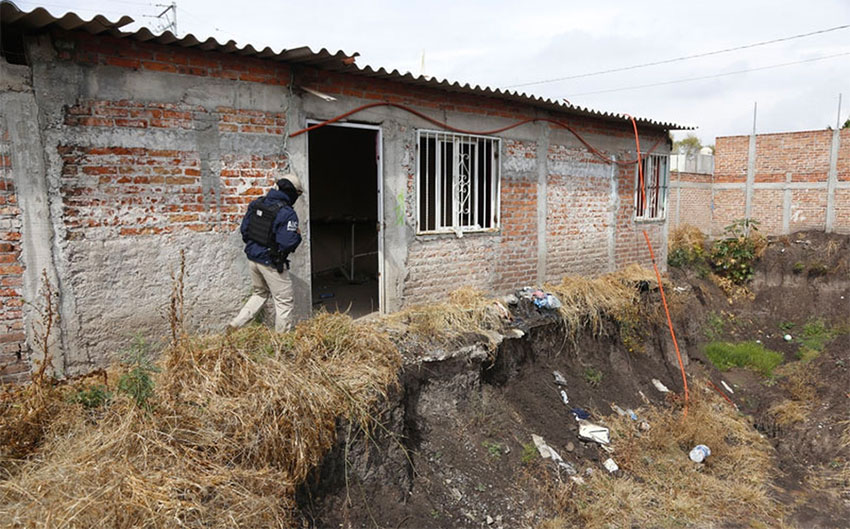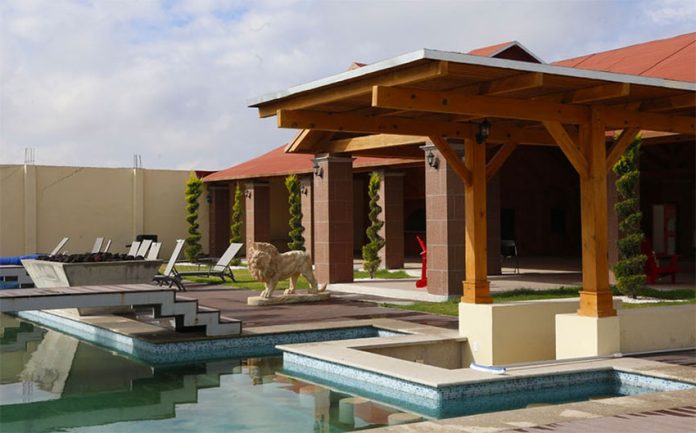Fugitive cartel leader José Antonio Yépez Ortiz built infrastructure in a small Guanajuato town and the surrounding area that was specifically designed to aid and abet his criminal activities and help him avoid capture.
Santa Rosa de Lima, a community in the municipality of Villagrán, was the home base of the Santa Rosa de Lima Cartel, a fuel theft and extortion gang, and a fortress for its leader, also known as “El Marro.”
According to a report by the newspaper Milenio, Yépez turned Santa Rosa de Lima into a town that perfectly met the needs of the criminal organization he heads. His properties there and in the neighboring municipality of Celaya also afforded him a life of luxury with his family and helped him to evade authorities.
Milenio reporter Jannet López Ponce described the criminal infrastructure that was once at the gang leader’s disposal and detailed its layout, explaining how it helped El Marro flee when authorities launched an operation to arrest him early last year.
A pink chapel on Leandro Valle, a street on the outskirts of Santa Rosa de Lima, marks the entrance to the town that was formerly Yépez’s undisputed domain.
Hidden behind trees on an unpaved nearby side street is a green house with a front yard that was used by the criminal gang for the manufacture and storage of homemade explosives.
That building may well have provided a space for the making of explosive devices left in a vehicle outside the Pemex refinery in Salamanca in January last year on the same day that a banner signed by El Marro appeared in the city demanding that President López Obrador remove federal security forces from Guanajuato.
Just 150 meters from the makeshift explosives factory is a yellow three-story structure that was once used as a cartel safe house, Milenio said, adding that a small business now occupies the ground floor. One-hundred meters further along Leandro Valle is the so-called “pink house,” where Santa Rosa de Lima gangsters dismembered the bodies of their victims and dissolved them in barrels of acid, according to authorities.
Two-hundred meters away in the center of the small community is a monument with two arches that El Marro reportedly had built in his own honor. Located in front of the town church, the structure alludes to the letter M, a reference to Yépez’s nickname.
A few meters away is a home that is now used by state police officers – who have wrested back control of Santa Rosa de Lima – to go to the bathroom, Milenio said. Yépez formerly loaned the house to residents for parties, occasionally also providing food, wine and musical groups.
According to Guanajuato security commissioner Sophia Huett, the purpose of making the home available for social functions was to maintain the social fabric of the town. In other words, it was a means for “El Marro” to ensure that he maintained the support and loyalty of residents, who set up road blockades and confronted security forces early last year to stymie the operation to locate and arrest him.

At the end of a nearby dirt road, the fugitive criminal leader – Mexico’s most notorious huachicolero, or fuel thief – created his own prison to house rivals from whom he believed he could extract information that would benefit the Santa Rosa de Lima Cartel, Milenio said.
When security forces seized control of the facility in the middle of last year, they freed six people — among them a police officer from the neighboring municipality of Celaya.
The makeshift jail had some of the features of a real one, such as cells with barred doors secured with padlocks. Mounds of dirt now surround the improvised lockup because authorities excavated the property to search for bodies, Milenio said. Those held there were reportedly told that they would be killed and buried on the grounds if they didn’t cooperate with their interrogators.
On the opposite corner is a house to which “El Marro” is believed to have retreated after he was personally involved in the interrogation and torture of people held in his prison. The home, which has a garden, swimming pool, bar and games area, is the largest seized by authorities in Santa Rosa de Lima.
Yépez was able to move between his network of properties in the space of just a few minutes, Milenio said, adding that their proximity to each other helped him to avoid capture.
A few kilometers from Santa Rosa de Lima is another enclave that was once controlled by Yépez and his criminal colleagues. On the outskirts of San José de Guanajuato, a town in the municipality of Celaya, is a warehouse that El Marro used as the front for a shell company his family created called Logística López.
The Santa Rosa de Lima Cartel stored stolen vehicles and goods in the warehouse as well as drugs and weapons. The property had a security camera system and a living room, bedroom and bathroom with a hot tub, Milenio said.
The warehouse has a door that leads directly onto one of Yépez’s most prestigious properties. Known as Casa Albercas, it boasts a large pool with a swim-in bar set in a garden decorated with stone statues of lions.
The home has an entrance onto a deserted street that allowed El Marro to access the Salamanca-Celaya highway and the Celaya airport in a matter of minutes.
A short distance away is the Alamo Country Club where Yépez had another luxury home in an exclusive residential estate. Painted in orange, the spacious house was the main residence for the criminal leader and his family, Milenio said.
While authorities have secured many properties linked to El Marro and his criminal organization, seized more than 100 vehicles, blocked access to bank accounts holding 35.4 million pesos and arrested scores of people connected to the Santa Rosa de Lima Cartel, including El Marro’s wife (later released), they have not managed to achieve the central aim of the operation they launched early last year: take Yépez into custody.
Still, Guanajuato Attorney General Carlos Zamarripa told Milenio that the operation to capture El Marro and break up the cartel is continuing with the same intensity with which it began last year. Asked when Yépez might be captured, he responded: “It’s something that is under investigation.”
Federal authorities have claimed success in reducing fuel theft in Guanajuato but have failed to stem bloodshed in the state, which was the most violent in Mexico last year with more than 3,500 homicides. A bloody turf war between the Santa Rosa de Lima Cartel and the Jalisco New Generation Cartel is believed to be the main cause of the high levels of violence.
There is also evidence that Yépez’s criminal organization has expanded into Querétaro and Hidalgo, while increasing its focus on collecting extortion payments in Guanajuato, including the expat and tourism mecca of San Miguel de Allende.
Source: Milenio (sp)
